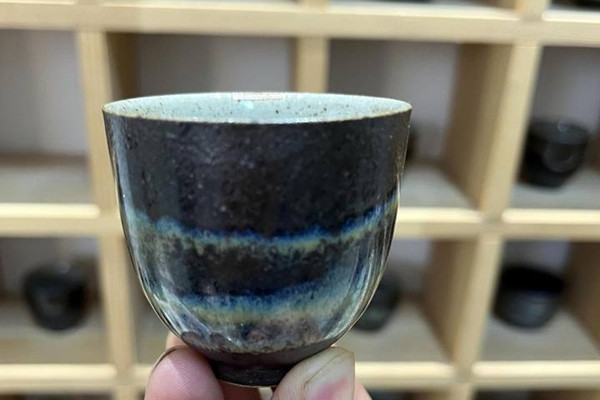
An ink gradient glaze is crafted by a craftsman in Pujiang county, Jinhua. [Photo/Tide News]
Pujiang county in Jinhua, Zhejiang province is a land where diverse cultures converge. It is where the world's first coal-inlaid pottery and the excavation of a pre-Northern Song (960-1127) kiln site were discovered and was renowned throughout history as a hub of Wuzhou kilns.
Recently, under the guidance of master craftsman Huang Minghui, a team embarked on a three-year journey of relentless exploration to unveil the mesmerizing ink gradient glaze, now revered as "Pujiang Glaze" within industry circles.
This groundbreaking feat not only elevates Pujiang's ceramic craftsmanship to new heights but also launches a new chapter in ceramic art by harmonizing tradition with innovation.
Huang drew inspiration from Shangshan culture, stating, "I have meticulously replicated and restored the ancient large basins unearthed from Shangshan relics." Since 2017, his focus has been on replicating a spectrum of colored pottery and Pujiang celadon from Shangshan and Song kilns.
Through meticulous experimentation with clay ingredients and replication methods for various vessel shapes, he has successfully recreated a range of pottery, including Shangshan coal-inlaid red pottery, double-eared jars, large basins, and Song kiln ceramics.
As a custodian of Pujiang's intangible cultural heritage in ceramic craftsmanship, Huang hopes that the research and development of the Ink Gradient Glaze will foster a deeper understanding and appreciation of the unique Wuzhou kiln, enriched with Pujiang's distinctive local characteristics.